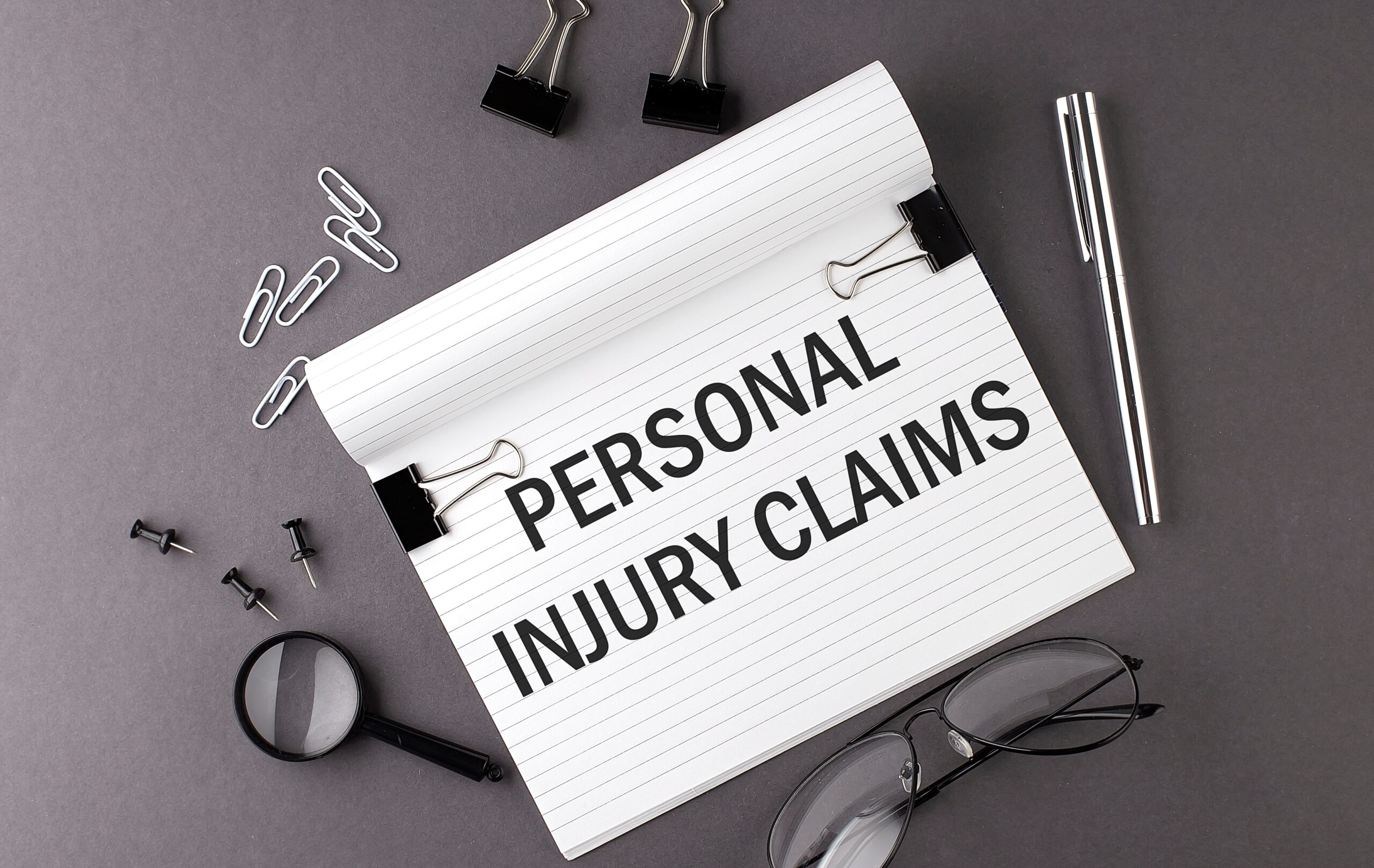Not every injury looks serious at first. Maybe your back felt tight after that car accident in the Loop, or your knee felt sore after a slip near your apartment in Rogers Park. You didn’t file a claim, didn’t go to the hospital, and hoped it would just go away.
But now, months—or even years—later, you’re still in pain. You’ve had to miss work. The medical bills are stacking up. And you’re wondering if it’s too late to do something about it.
The truth is, you’re not alone. We talk to people across Chicago every day who waited to speak up. Some didn’t realize how bad the injury was. Others didn’t want to cause trouble or thought the insurance company would handle it fairly. a
Unfortunately, injuries often get worse over time, and waiting can complicate your legal options. That said, a delay doesn’t mean you’re out of luck.
At Abels & Annes, P.C., we help people figure out what’s possible—even when an accident is long behind them. If you’re dealing with lingering pain, unexpected medical treatment, or insurance problems after an old injury, there may still be time to act. But the window is closing fast, and we want to help you before it does.
Can you Sue for an Old Injury? Key Points
- Yes, you may file a claim for an old injury, but it depends on your state's laws and the specific facts of your case.
- The Statute of Limitations: Every state has a legal deadline, called a statute of limitations, for filing a personal injury lawsuit. This is typically between one to four years from the date of the injury.
- The Discovery Rule: In some cases, this deadline doesn't start until you discover or reasonably should have discovered your injury. This rule can be crucial for delayed-onset injuries.
- Evidence is Key: The biggest challenge with older claims is proving the original incident caused your current medical problems. Prompt action is still vital to preserve evidence and witness testimony.
Understanding the Statute of Limitations
The most significant legal barrier to an old injury claim is the statute of limitations. This is a law passed by each state that sets a strict time limit on your right to file a lawsuit.
If you miss this deadline, you will likely lose your right to recover compensation, regardless of how strong your case is.
- How Long Do I Have? These deadlines vary significantly by state. For personal injury claims, they commonly range from one to four years.
- When Does the Clock Start? Typically, the clock starts on the date the injury occurred. However, an important exception called the discovery rule may apply. In states that recognize this rule, the clock may not start until the date you actually discovered your injury or reasonably should have discovered it. This can extend the deadline for victims with injuries that have delayed symptoms.
An attorney can determine which statute of limitations applies to your case and whether any exceptions might exist.
Why People Wait to Sue After an Injury
Waiting to take legal action after an accident is more common than you might think. We’ve worked with people all over Chicago—from Lakeview to South Shore—who delayed filing a claim, only to find out months later that they were more seriously hurt than they realized.
Some of the most common reasons people wait include:
- They didn’t think the injury was serious at first
- They were worried about missing work or losing their job
- They were afraid of legal costs or court hassles
- They thought the pain would go away with time
- They didn’t know who was at fault, or blamed themselves
- They expected the insurance company to take care of it
It’s normal to hope you’ll recover without needing legal help. But when symptoms don’t improve—or new problems develop—what started as a minor issue can become life-changing.
By the time you realize you’re dealing with a long-term injury, the medical bills may already be piling up, and the insurance company may not be returning your calls.
If this sounds like your situation, don’t assume you waited too long. Talk to a lawyer who can evaluate your case and explain what your options are—before time runs out.
What Happens if You Wait Too Long?
The law gives you a limited time to take legal action after an injury, but there’s a lot more to worry about than just the deadline. Even if you’re technically still within the legal window to sue, waiting can make it much harder to prove your case.
Here’s why:
- Witnesses forget details, move away, or stop responding
- Security camera footage is often deleted or lost within weeks
- Photos and physical evidence disappear
- Medical records may become harder to connect to the original accident
- Insurance companies may argue that the injury must have come from something else
If you delay too long, insurance adjusters and defense attorneys will use the gap against you. They’ll claim that if your injury were real, you would’ve acted sooner. They may even say the injury was caused by something totally unrelated.
It’s not fair—but it’s what happens. That’s why we always recommend getting legal guidance as soon as you realize your injury isn’t going away. Even if the accident happened months ago, we can still gather documentation, interview witnesses, and build a strong case—but the sooner we start, the better your chances.
Can You Still FIle a Claim for an Old Injury?
In many cases, yes—you can. Illinois law allows personal injury claims to be filed within a specific time frame, and we’ve helped clients throughout Chicago file successful claims even when the injury happened long ago. The key is showing a clear connection between the accident and your current condition.
For example, we’ve handled cases where:
- A bicyclist who thought they were fine later needed surgery for a torn ligament
- A pedestrian hit in a crosswalk didn’t feel pain until weeks later, when the swelling wouldn’t go down
- A driver who declined ambulance care ended up in physical therapy after delayed-onset back pain
- A retail customer who slipped on a wet floor didn’t realize they had a fractured tailbone until imaging was done days later
As long as your medical records, accident details, and symptoms can be traced back to the original incident, you may still have a valid case. Every situation is different, and the timeline matters—but the only way to know for sure is to speak with a lawyer.
Don’t guess. Let us take a look and tell you what your next steps should be.
Why You Shouldn't Handle It Alone
Trying to deal with an old injury on your own is risky—especially when insurance companies are involved. Even if your symptoms are real and you have documentation, the process of proving your case after a delay is far from simple.
Insurance adjusters are trained to minimize payouts. They’ll question everything:
- Why you waited to report the injury
- Whether the injury really came from the original incident
- If your pain could have been caused by something else
- Whether your current treatment is “necessary”
And the longer it’s been since the accident, the more ammunition they have to use against you.
This isn’t something you should try to navigate alone. When you hire a personal injury lawyer, you’re not just hiring someone to file paperwork—you’re bringing in someone who can challenge insurance tactics, gather evidence, and build a case that clearly shows how your injury happened and why it matters.
At Abels & Annes, P.C., we handle all communication, investigations, and legal strategy. That means no more back-and-forth with insurance companies, no more guessing, and no more carrying this burden on your own. We’re here to take the weight off your shoulders and do the hard work for you.
How We Build a Case Around an Older Injury
Building a personal injury case becomes more complex as time passes—but with the right strategy, we can still put together a compelling claim. Our job is to connect your current condition to the original accident in a way that’s clear, credible, and backed by evidence.
Here’s how we do that:
- Medical review – We gather your treatment records and speak with your doctors to understand when symptoms started and how they’ve progressed.
- Accident reconstruction – If needed, we work with investigators to recreate the scene and prove how the injury could have occurred.
- Witness interviews – We track down anyone who saw the accident or can speak to how the injury has impacted your life.
- Paper trail development – We use emails, texts, photos, work records, and more to show a timeline of pain and recovery.
- Insurance analysis – If you previously contacted insurance, we examine any claim notes, offers, or denials to build your case.
We’ve handled claims in all kinds of Chicago neighborhoods—from Gold Coast to Englewood—and know how to find the evidence that counts. You don’t need to have all the answers. That’s our job. And we take pride in fighting for people who deserve a second chance at justice.
What You Can Recover If You Still Have a Valid Claim
If your injury can be clearly linked to the original accident, and the legal window hasn’t fully closed, you may still be entitled to significant compensation. The goal of a personal injury claim is to help you recover what you’ve lost—not just financially, but also in terms of health, stability, and peace of mind.
Depending on the details of your case, you may be able to recover:
- Medical expenses – Including emergency care, follow-up visits, physical therapy, surgery, medications, and any future care your doctors say you’ll need.
- Lost income – If your injury caused you to miss work or reduced your ability to earn a living, those wages can be factored into the claim.
- Pain and suffering – Compensation for physical discomfort, emotional distress, and the overall impact the injury has had on your quality of life.
- Out-of-pocket costs – Things like medical equipment, travel to appointments, or help with daily activities may also be covered.
At Abels & Annes, P.C., we work closely with doctors, economists, and life care planners to make sure we understand the full picture. You shouldn’t be left with the financial burden of someone else’s negligence—especially not when that burden grows over time.
Why Timing Still Matters
Even if you still have time under Illinois law, every day that passes makes your case harder to prove. Physical evidence disappears. Medical records get harder to connect. Witnesses forget what they saw or how the accident happened. And the insurance company is already preparing to question why you waited.
This isn’t about pressuring you—it’s about protecting your claim. We’ve worked with clients throughout Chicago who thought they had time, only to find out the hard way that waiting made everything more difficult. That’s why we always say: don’t wait until it’s too late to find out.
The moment you realize you’re still dealing with pain, limitations, or medical costs from an old injury, that’s the time to call a lawyer. Not next week. Not after another doctor’s visit. Now.
We can take the pressure off immediately by handling all communication, gathering missing documentation, and putting your case on solid ground. Whether your accident happened last month or much earlier, the sooner we get involved, the more options we may be able to preserve.
Questions About Suing for an Old Injury
What if I don't remember the exact date of my accident?
Not remembering the exact date is a common issue with older injuries.
We can help you reconstruct a timeline using other evidence. This could include reviewing your personal calendars, work attendance records, social media posts, text messages, or bank statements that might show activity on or around the day of the incident.
The sooner you act, the more likely it is that these digital or paper trails can be found.
Does the discovery rule apply to all types of injuries?
The application of the discovery rule varies widely by state and the specifics of the case. It is most commonly applied in situations where the injury is not immediately obvious, such as internal organ damage, a slowly developing repetitive stress injury, or illnesses caused by toxic exposure.
It is generally not applied to injuries that a person would reasonably be aware of immediately, like a broken bone from a fall. A legal professional must evaluate your specific circumstances to see if the rule could apply.
The person who injuried me was driving a company vehiclea. Does that change anything?
Yes, it can significantly change your options. If the at-fault person was working at the time of the accident, their employer may also be held liable under a legal doctrine called respondeat superior.
This can help your claim, as a company often has greater insurance coverage and assets than an individual. This can also create additional avenues for gathering evidence, such as vehicle maintenance logs and employee records.
What is the single most important piece of evidence for an old injury claim?
While every piece of evidence helps, the most critical element is almost always the medical documentation. Your ability to win an old injury case hinges on proving a clear, unbroken link between the original incident and your current medical condition.
Medical records that show a consistent history of complaints and treatment starting from a point close to the accident are invaluable.
Without a strong medical paper trail, it becomes incredibly difficult to counter the insurance company's argument that your injury was caused by something else.
What Makes Our Approach Different
At Abels & Annes, P.C., we don’t treat your case like a number. We know that behind every injury is a person whose life has been disrupted—someone trying to manage pain, pay bills, and figure out what comes next. That’s why we give every case the attention it deserves, no matter when the injury occurred.
Our team takes the time to listen and understand the full impact of your accident, even if it happened months ago. We dig into the details, gather the records, and make sure your voice is heard. We’re not interested in quick settlements that leave you undercompensated. We’re here to pursue every dollar you’re entitled to—because we know how much it matters.
From traffic crashes on the Kennedy Expressway to slip and falls on the icy sidewalks of West Ridge, we’ve helped injury victims across Chicago get back on their feet. If your injury was ignored, underestimated, or left untreated for too long, it doesn’t mean the opportunity is gone. It means now is the time to act.



